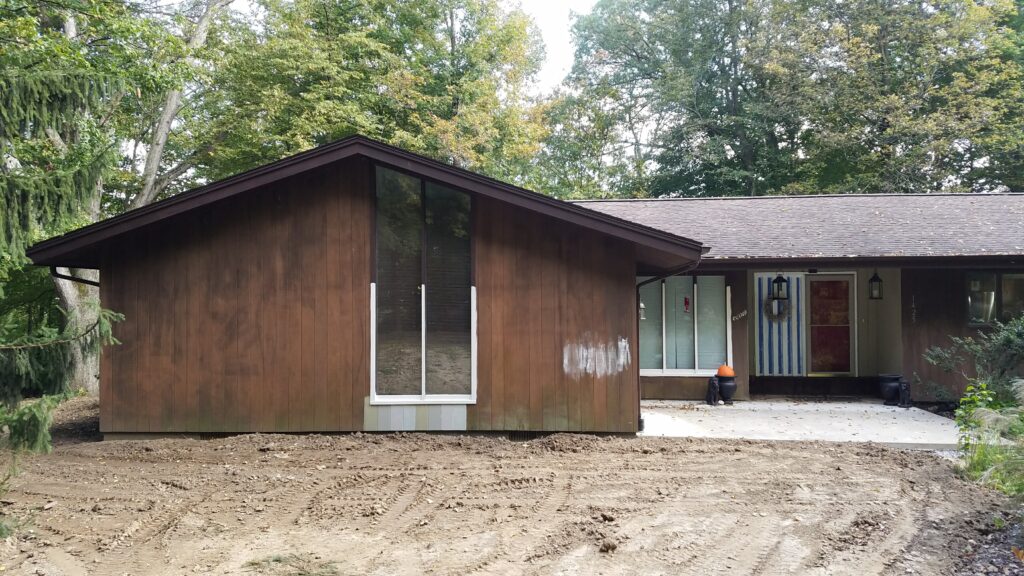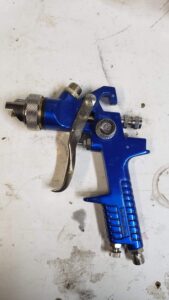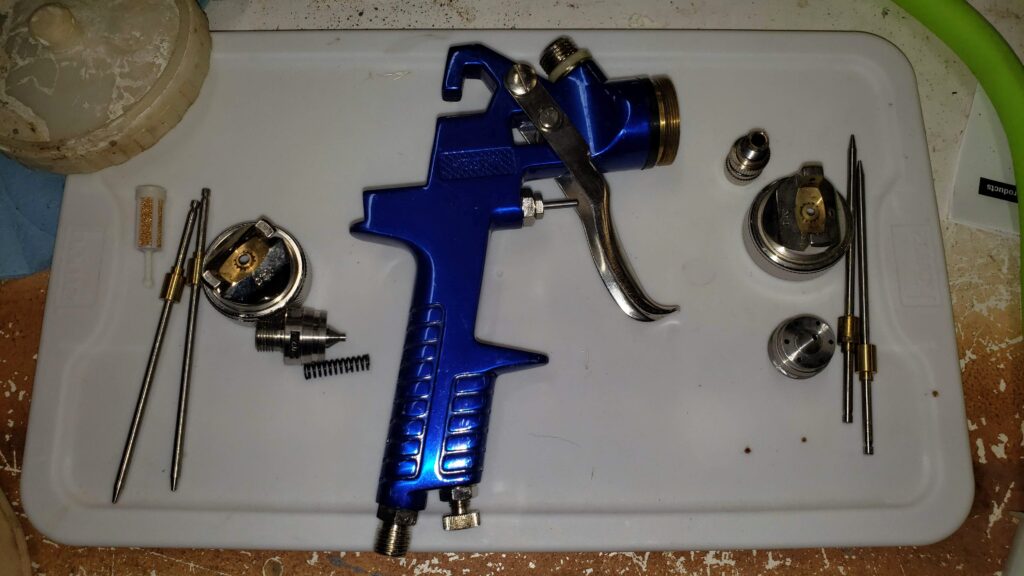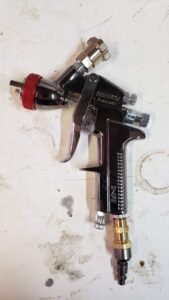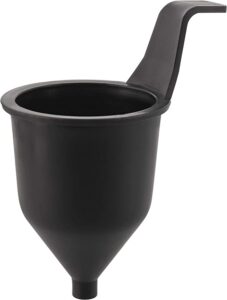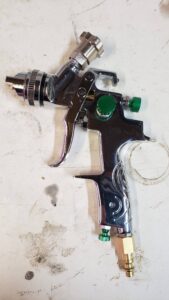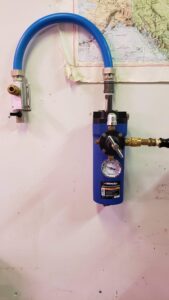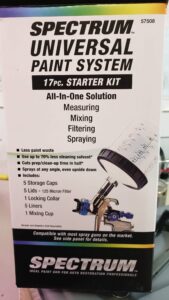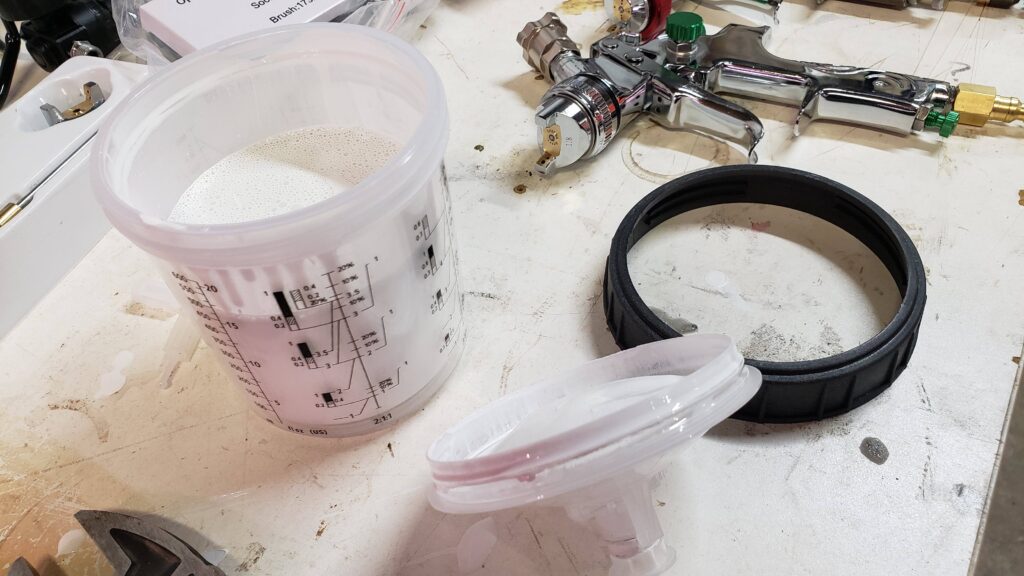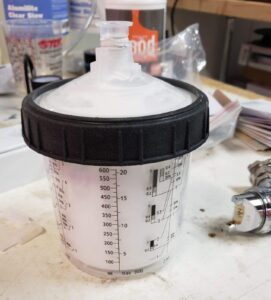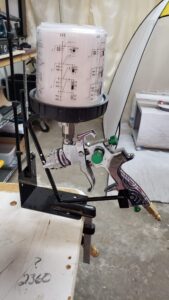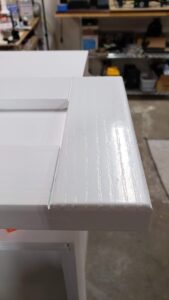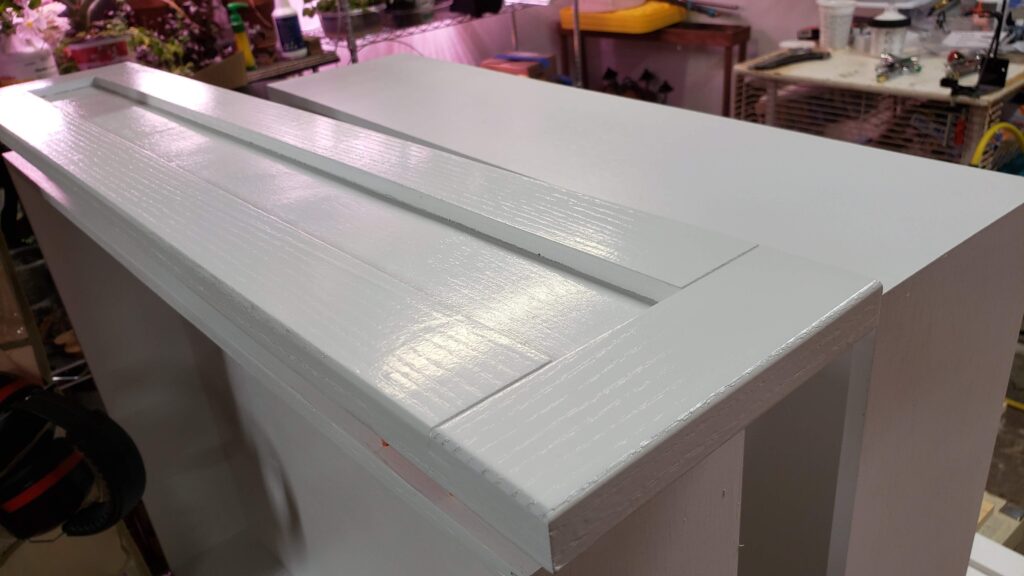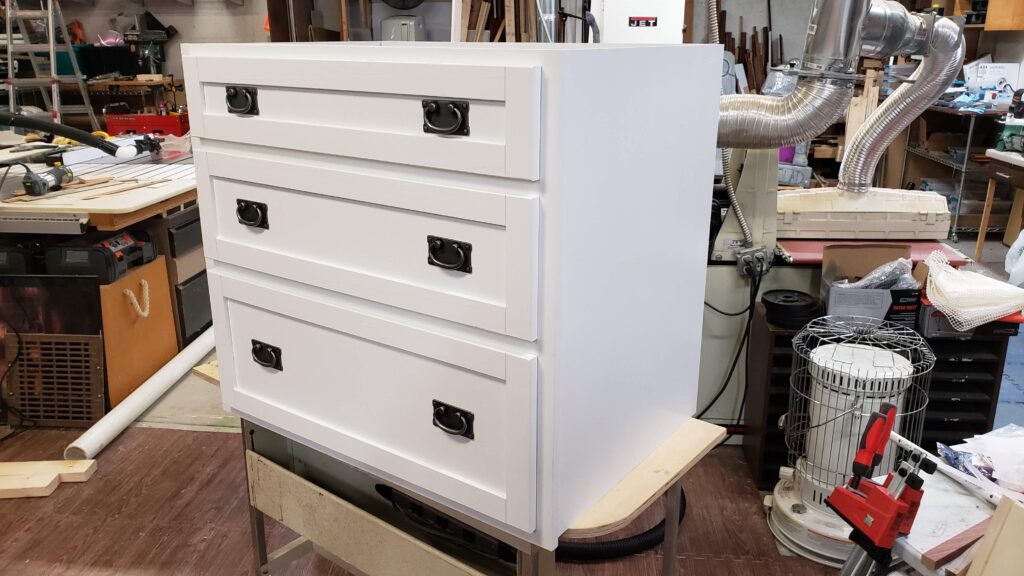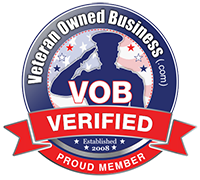I’ve always been interested in spray finishing, whether it’s painting the castle fort, painting our house, or applying finish or paint to woodworking projects. Over the years I’ve tried various systems and solutions, from our first Wagner Power Painter, to a cheap LVLP siphon spray gun from Home Depot, to the Wagner Spraytech FLEXiO 5000 HVLP system. This last one we used to paint our house, and it did an excellent job.
Along with painting the house and the fort, I really wanted to be able to spray woodworking projects, whether a clear finish, or paint. I did use the FLEXiO to paint all of the interior doors and cabinetry in the house, and it worked pretty well. But I didn’t think it was as versatile as some of the more expensive self contained turbine units, such as the Fuji, Earlex, or Apollo sprayers.
Meanwhile I already had a cheap HVLP spray gun for a compressor.
I forget where I got this gun from. It came with a 1.4 mm and a 2.0 mm nozzle set. I never did much with this gun. Mainly because I didn’t know what I was doing and didn’t know how to use it properly.
After doing some more research, I was sure that what I really needed was something like a Fuji 4 or 5 stage system. After all, this was what the Wood Whisperer used. I’ve eyed and oogled them for some time, checking and rechecking prices, features, deals, you name it. It was then that I saw a Fuji spray gun meant for a compressor. But even this gun was expensive. Not nearly as expensive as the turbine systems, but still more than I wanted to spend.
But this got me looking at compressor guns again. There were a lot of them out there, and the prices were not out of the ball park. For under a hundred bucks, you could get a decent gun by many standards and reviews.
I was hoping to find one that had a variety of nozzle size options. I liked the Neiko 31216A with 2.0 mm nozzle, and they had them with other nozzle sizes as well. So I bought one to try on some drawer fronts I had been working on.
Unfortunately, I have been unable to locate where to buy additional nozzle sets for this gun. It appears you can only buy the entire gun with the appropriate nozzle.
I bought this one with the 2.0 mm nozzle based on my research into what is best for spraying acrylic latex paint. The paint I was using for the cabinets is Sherwin Williams ProClassic Acrylic Enamel paint. Some more research showed how to properly thin the paint and how to actually measure the viscosity using a #4 Ford cup.
The way you use this is you submerge the cup into the liquid (paint), lift it out, and measure the time it takes to empty the cup, at the point the stream of liquid coming out breaks. For latex paint, you are shooting for 20 – 30 seconds. Thin the paint with water until you achieve this viscosity.
The finish from the gun was pretty good, but I was still looking to improve. I was looking for the magic combination of:
- Viscosity
- Nozzle/Needle Size
- Air Pressure
- Ease of Setup
- Ease of Use
I continued researching spraying latex paint, viscosity, and nozzle size. I thought the atomization I was getting was pretty good, but some sources say that 2.0 mm is too small, and 2.5 mm will give better atomization for the thicker paint. But I also found a source that compared 3 nozzle sizes for paint. He got the best paint finish with a smaller, but not too small, nozzle. I thought that was very interesting. I think the viscosity you are able to thin to makes a big difference, however you do not want to thin the paint too much.
I decided to purchase a TCP Global Professional G6600 Series gun. I chose this as it has good reviews, but also you can purchase 6 sizes of nozzle sets. I bought the gun with the 2.5 mm nozzle, and an additional 1.8 mm nozzle set.
Along the lines of Ease of Use, I installed a wall mounted pressure filter and regulator in the finishing area of the shop. I purchased the Merlin Industrial Air Filter Regulator from Harbor Freight.
I had been using the inline filter and regulator attached to the gun, but this made them rather unwieldy. This filter/regulator is very well made, and does a much better job of filtering the air than the small inline filters. The regulator is also much more accurate than the gun-attached one. I use a short 15 foot air hose to the gun to reduce the amount of pressure loss and possible air contamination before the gun. This makes it a lot easier to use.
For Ease of Setup, I purchased the Spectrum Universal Paint System, also from Harbor Freight.
This system replaces the fixed cup on top of the gun with a modular set of components consisting of a measuring cup cup liner, filtering cap, and a lock ring. No longer do you need to filter your paint into the gun cup, as the lid has a built in filter. There are also caps included so you can store the paint in the cup.
There are various adapters that fit the top of the guns, get one that fits your gun.
This greatly speeds up the setup of the gun, and also the cleanup, as you no longer have to clean the cup. Just turn the gun upside down, pull the trigger (with the air hose removed, of course) to drain any paint back into the cup, and untwist it to remove the cup. Cleanup us a breeze, as there is just the nozzle cap, nozzle, needle, and gun to clean.
Back to the painting. I decided to try the 1.8 mm nozzle. It seemed to atomize very nicely. The surface from this paint was very smooth, and I am extremely pleased with the results.
Thanks for reading!

